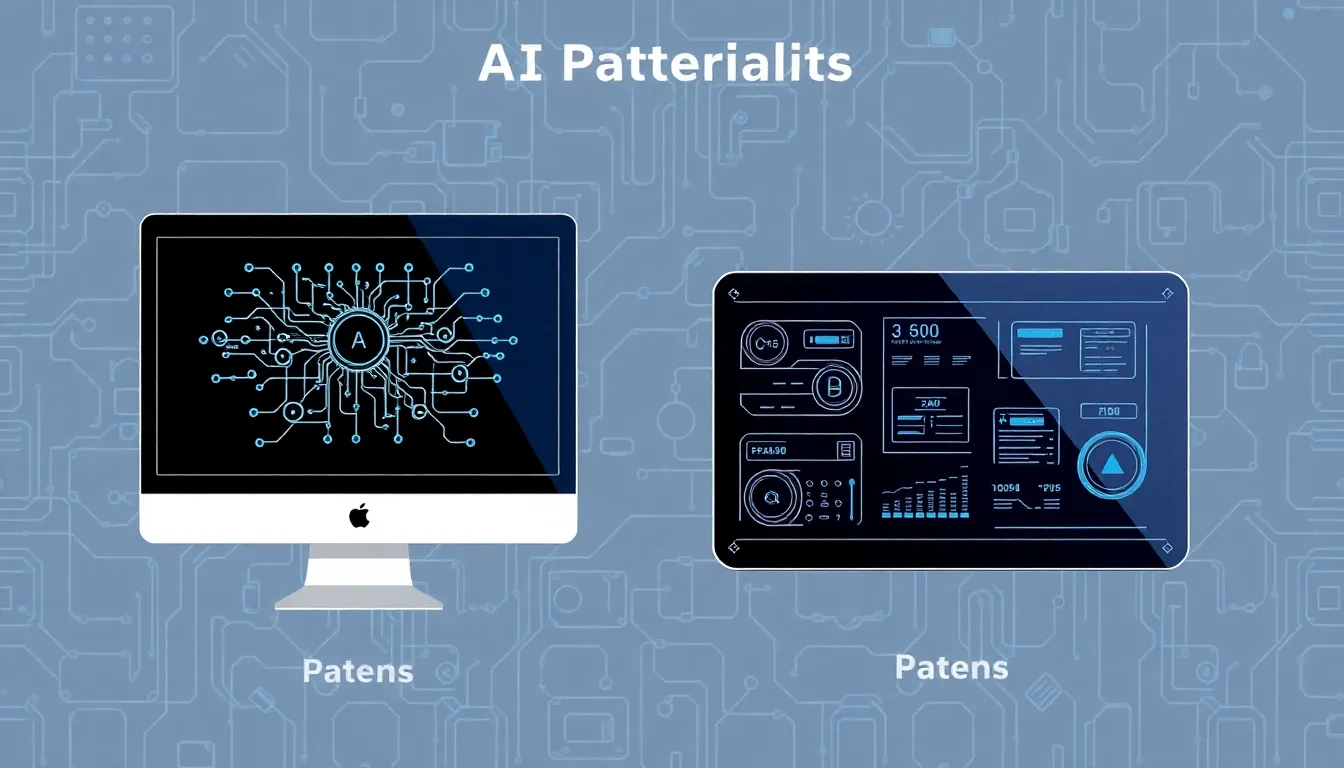The rise of artificial intelligence has sparked a revolution in various industries, leading to groundbreaking innovations that challenge traditional notions of ownership and intellectual property. As companies rush to harness AI’s potential, the question of who holds the rights to these inventions becomes increasingly complex.
AI patents are at the forefront of this debate, as they not only protect technological advancements but also shape the future landscape of innovation. Understanding the implications of AI patents is crucial for businesses and inventors alike, as they navigate the evolving legal framework surrounding these cutting-edge technologies. This article delves into the nuances of AI patents, exploring their significance and the challenges they present in an ever-changing digital world.
Table of Contents
ToggleOverview of AI Patents
AI patents address the unique challenges posed by artificial intelligence innovations. These patents protect inventions that involve AI technologies, including algorithms, models, and applications. The rapid evolution of AI has led to a significant increase in patent filings, with reports indicating a 15% annual growth in related applications since 2015.
The legal landscape for AI patents remains complex due to existing intellectual property frameworks. Current patent laws often struggle to adequately define the boundaries for AI-generated inventions. Many jurisdictions require human inventors, complicating the ability to patent AI-developed creations. Courts examine whether AI systems meet criteria for patentability, such as novelty and non-obviousness.
Companies are now investing heavily in AI research and development. Organizations like IBM and Google account for the highest number of AI patents, driving competition in the tech sector. According to the World Intellectual Property Organization (WIPO), over 34,000 AI-related patents were filed globally in 2020 alone.
Navigating the patent application process for AI inventions involves specific strategies. Inventors must clearly articulate the technical aspects of their inventions and demonstrate their practical applicability. Proper documentation and understanding of the relevant legal frameworks contribute to securing patent rights effectively.
The landscape of AI patents continues to evolve alongside advancements in technology, impacting businesses and innovators.
Categories of AI Patents

AI patents fall into several categories, primarily utility patents and design patents. Each category addresses different aspects of AI technology and innovation.
Utility Patents
Utility patents protect the functional aspects of inventions, including new and useful processes, machines, or compositions of matter. In AI, this category covers algorithms, software solutions, and methods for data processing. For example, a utility patent may protect a novel machine-learning algorithm that improves predictive analytics accuracy. Companies often file utility patents to secure their competitive edge in developing AI technologies, with many focusing on unique applications in various fields such as healthcare, finance, and transportation.
Design Patents
Design patents safeguard the ornamental designs of a functional item. In the context of AI, design patents encompass the specific visual attributes of user interfaces, product aesthetics, or hardware configurations. For instance, a design patent may cover the unique look of a chatbot interface or the shape of a robotics component. Though less common in AI than utility patents, design patents still play a crucial role in protecting the brand identity and marketability of AI-related products.
Legal Landscape of AI Patents
The legal landscape surrounding AI patents involves ongoing developments and challenges. It reflects the rapid growth of AI technologies and the complexities of protecting innovations within existing intellectual property frameworks.
Major Legal Cases
Key legal cases shape the understanding and application of AI patents. In Thaler v. Hirshfeld, the Federal Circuit ruled that a non-human inventor could not be listed as an inventor on a patent application, emphasizing the requirement for a human co-inventor. This decision highlights the struggle to adapt current patent laws to accommodate advancements in AI. In another notable case, Microsoft Corp. v. Corel Corp., the court addressed the patentability of software algorithms, reinforcing the importance of clear definitions in patent claims regarding AI technologies. These legal precedents influence how organizations approach patent applications and ownership for AI inventions.
Patent Office Guidelines
Patent office guidelines play a crucial role in the examination of AI patents. The United States Patent and Trademark Office (USPTO) released examination guidelines that clarify how patent examiners should review AI-related inventions. These guidelines stress the importance of disclosing substantial utility and providing specific technical descriptions. Furthermore, the European Patent Office (EPO) requirements emphasize a clear demonstration of technical innovation beyond mere automation. Adhering to these guidelines is essential for inventors seeking to navigate the complexities of patent applications in the AI sector.
Challenges in AI Patent Enforcement
AI patent enforcement faces several significant challenges that stem from the rapid evolution of technology and existing intellectual property frameworks.
- Legal Precedents
Legal precedents often lag behind technological advancements. Courts struggle to interpret laws that were not designed for AI-generated inventions, creating uncertainty in enforcement.
- Attribution of Inventorship
Attribution poses a complex issue. Many jurisdictions require human inventors for patent applications, making it difficult to navigate ownership when an AI system creates an invention independently.
- Scope of Protection
The scope of existing patent protection can limit the enforcement of AI patents. As AI technologies continually evolve, existing patents may not adequately cover new applications or improvements, resulting in gaps in protection.
- Global Variability
Global inconsistency in patent laws complicates enforcement. Different countries have varying definitions and frameworks for AI patentability, making international enforcement difficult.
- Proof of Utility
Demonstrating substantial utility becomes challenging. Inventors and companies must provide clear evidence of practical applicability, which may be difficult due to the abstract nature of certain AI technologies.
- Infringement Detection
Detecting infringement of AI-related patents is inherently challenging. The complexity of AI systems and their widespread integration in various products complicates measures for enforcement and monitoring infringement.
- Rapid Technological Advancements
Rapid advancements in AI technology outpace updates in patent laws. This creates an environment where existing interpretations and regulations fail to align with current innovations, resulting in inconsistent enforcement outcomes.
- Cost of Litigation
The high cost of litigation can deter enforcement. Many businesses, especially startups, find the cost prohibitive, limiting their ability to protect their intellectual property rights.
Addressing these challenges remains critical for fostering innovation and ensuring adequate protection for AI inventions.
Future Trends in AI Patents
Rapid advancements in AI technology will significantly shape future trends in patents. Increased filings will continue as businesses and inventors seek to safeguard innovations. Predictions indicate a potential 20% annual growth rate in AI patent applications by 2025, reflecting the urgency for protecting intellectual property.
Emerging areas within AI will likely see heightened patent activity. Areas such as natural language processing, machine learning algorithms, and autonomous systems stand out. Companies investing resources in these technologies should prioritize patent applications to secure competitive advantages.
Collaboration between tech firms and research institutions will affect patent strategies. Joint ventures may lead to a rise in co-patenting arrangements, enabling shared ownership of AI inventions. This trend necessitates clear agreements outlining contribution, ownership, and licensing rights.
Regulatory changes are expected to evolve alongside technological innovations. Legislative bodies may adapt existing frameworks to clarify definitions of inventorship in AI-generated creations. Anticipating changes in patent laws can guide businesses in their filing strategies and compliance measures.
International harmonization of patent laws may emerge to address jurisdictional discrepancies. Enhanced cooperation among global patent offices might streamline processes for AI patent applications. As more countries recognize the unique challenges of AI technology, unified guidelines may support smoother filing and enforcement.
AI’s role in patent examination will likely increase. Tools powered by AI can assist patent examiners in assessing applications more efficiently. This may lead to faster patent approvals and more consistent interpretations of patentability criteria.
Finally, ongoing litigation and case law development around AI patents will inform future strategies. Monitoring key cases will provide insights into how courts interpret AI-related patents, shaping legal expectations in this dynamic field. Businesses should stay informed to navigate this evolving landscape effectively.
The landscape of AI patents is rapidly evolving as technology advances and industries adapt. Navigating this complex terrain requires a keen understanding of intellectual property rights and the unique challenges posed by AI-generated inventions. As the demand for AI innovations grows, so does the necessity for businesses to stay informed about patent strategies and legal developments.
Future trends suggest an increase in patent applications and collaborative efforts between tech firms and research institutions. Embracing these changes will be essential for fostering innovation and ensuring adequate protection for AI inventions. The journey ahead will demand agility and foresight from inventors and companies alike as they strive to secure their place in this dynamic field.




